One: Ensure jigs are designed within movable dimensions (height width) for road moves.
One critical aspect of every design is the logistics of transporting to site. Often an overlooked aspect of the process, it requires careful consideration, as without, it can unfortunately have drastic repercussions.At the design stage, if applicable, the jigs should be designed as a flat pack kit of parts that can be assembled at site. This avoids any requirements for escort vehicles and/or police escorts which can not only increase costs but also delay projects due to availability.
Please refer to road move guidelines as per https://www.gov.uk/esdal-and-abnormal-loads
Road Transport Restrictions (UK)
Width Restrictions
- < 2.9m Within Gauge
- >2.9m <3.5m Notify police & local councils 2 clear days notice
- >3.5m <5.0m 2nd Man required, notify police & local councils 2 clear days’ notice
- >4.3m <6.1m private escort required. See note below.
- >5.0m <6.1m VR1 required ( www.highways.gov.uk/esdal ), notify police 2 clear days notice
- >6.1m Special Order required ≤ 27.4m O/all Length
- ≤ 150 Te GVW
Length Restrictions
- Max length 27.4m without special order.
- 2nd Man over 18.3m
- If drawbar trailer above exclusive of tractor
Height Restrictions
- 16’ 1” (4.9m) clears motorway bridges at 16’ 6”
Trailer overhang (rear)
- < 3’ 6” (1067mm) No legal requirements
- < 6’ 0” (1828mm) End board
- < 9’ 10” (2997mm) End & side boards
- > 9’ 10” (2997mm) End & side boards, 2nd man & police notice
Note: Over 3.5m width, provision of “private escort” covers requirement for 2nd Man (attendant).
Hauliers will in most case use this option.
Two: Identify build method from the outset
Fail to prepare, prepare to fail. Before commencing with the fabrication phase, consideration must be given to the planning and build methodology. For more complex details that require a large amount of local welding, you may wish to sub-assemble the units in their pre-weld state (i.e after tack welding together). This ensures that all the mating faces are accurately aligned prior to full welding. During welding the intense heat can often distort the steelwork and misalign the mating faces resulting in additional efforts being required, not to mention additional time and costs.
It is better to catch this distortion at this stage rather than fully weld and try fit misaligned joints after welding, as by that point it’s far too late.
Three: Ensure Section sizes and grades are readily available when designing
Another issue that arises time and time again is specifying section sizes that are not readily available. Having seen it before, the design phase closes out, the client is happy, enquiries for procurement go out and at this point it becomes apparent the sections are not available. Its then back to the drawing board. By having a designer’s manual / guide, it helps aid design engineers throughout the design phase in choosing off the shelf sections from the outset. These design guides are extremely useful, based upon years of lessons learned.
Four: Green
As these jigs are generally suited to mate with another unit or piece of equipment there is often a consideration for green material to be left on. Generally speaking, this green would then be removed in situ when the mating unit is surveyed, and an accurate interface is established.
When designing transportation jigs it is always a good idea to identify the mating unit so that considerations can be made for tolerance and overlengthening materials.
Five: Black Builds & Factory Acceptance Testing (FAT)
When time permits its often a very beneficial process to black build steelwork before progressing to the surface finish phase of a project. The term black build refers to the process of assembling all components of the structure in their pre-finished state. i.e before any surface finishing takes place such as shotblasting and/or painting. Doing this ensures that all of the components fit and align as intended before committing to the finishing stages. Subsequently, if any issues do arise at this stage then they can be rectified in a timely manner. If not, then you may have to redo the paint job, if areas are to be reworked.
If the black build is not possible for whatever reason a last precautionary measure is to hold a Factory Acceptance Test or “FAT” – this acts as the review stage before the structure is dis-assembled and dispatched to site. Although this is usually done after the structure is painted it is a good opportunity to inspect and assess the structure before it is finally dispatched. Therefore, ensuring all is as it should be before arriving on site.
Usually the process would be as follows:
Fabricate > Black Build > Surface Finish > Factory Acceptance Test (FAT) > Dispatch

